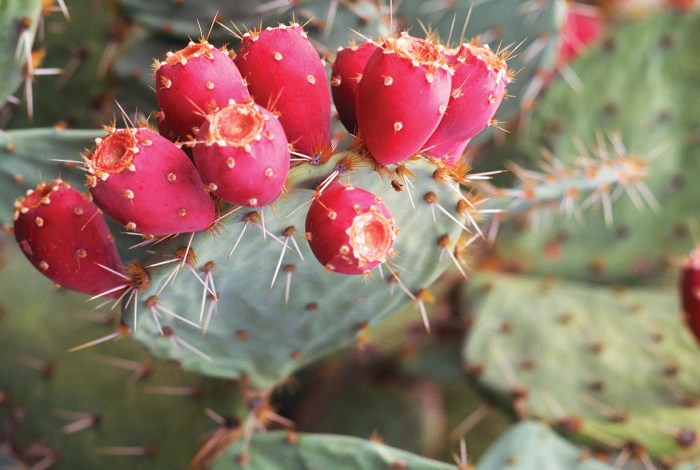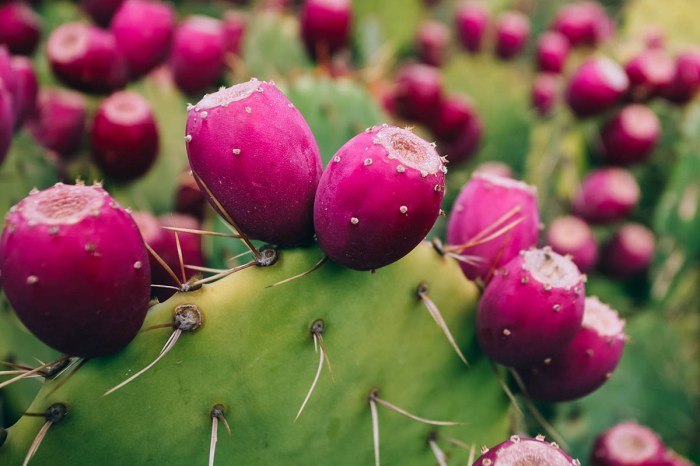Can You Plant Prickly Pear Seeds?
Prickly Pear Seed Germination and Planting: Can You Plant Prickly Pear Seeds
Can you plant prickly pear seeds – Cultivating prickly pear cacti from seed presents a rewarding challenge for the dedicated gardener. While propagation through cuttings is quicker, growing from seed offers a unique connection to the plant’s life cycle and potential for genetic diversity. This guide provides a comprehensive overview of the process, from seed preparation to seedling care, addressing optimal conditions and potential challenges along the way.
Prickly Pear Seed Germination Conditions
Successful prickly pear seed germination hinges on replicating the conditions found in their natural habitat. This includes careful consideration of temperature, moisture, and light.
Optimal germination typically occurs within a temperature range of 20-30°C (68-86°F). Consistent moisture is crucial, maintaining a damp but not waterlogged environment. While seeds don’t require direct sunlight for germination, indirect light is beneficial. Direct sunlight on the seeds themselves may cause overheating and reduce germination rates.
Prickly Pear Seed Preparation Techniques
Prickly pear seeds possess a hard outer coating that can hinder germination. Pre-treating the seeds, a process known as scarification or soaking, significantly improves germination rates. Scarification involves mechanically weakening the seed coat, while soaking softens it through hydration.
Scarification can be achieved by gently abrading the seed coat with sandpaper or by using a chemical scarification method. Soaking involves submerging seeds in water for 24-48 hours, or until they swell. Studies have shown that scarification combined with soaking often yields the highest success rates, with germination rates increasing by up to 50% compared to untreated seeds.
Germination Methods Comparison
While various methods exist, the most common include direct sowing and starting seeds indoors. Direct sowing involves planting seeds directly into the ground, while starting indoors provides greater control over the environment. Success rates vary; indoor sowing, with its controlled environment, often boasts higher germination rates, especially in colder climates. Direct sowing, while potentially slower, mimics the natural process and can result in hardier plants.
Specific success rates depend heavily on factors such as seed quality, environmental conditions, and the method of preparation used.
Step-by-Step Prickly Pear Seed Germination Guide
| Step Number | Action | Timing | Notes |
|---|---|---|---|
| 1 | Prepare seeds (scarification/soaking) | 24-48 hours | Use sandpaper for scarification or soak in warm water. |
| 2 | Sow seeds in a seed starting mix | Immediately after preparation | Use a well-draining cactus and succulent potting mix. |
| 3 | Lightly cover seeds with mix | N/A | Avoid burying too deep; a light dusting is sufficient. |
| 4 | Keep the soil consistently moist | Throughout germination | Avoid overwatering. Use a spray bottle for gentle watering. |
| 5 | Provide indirect light | Throughout germination | Avoid direct sunlight, which can overheat the seeds. |
| 6 | Maintain optimal temperature | Throughout germination | Aim for 20-30°C (68-86°F). |
| 7 | Monitor for germination | 2-8 weeks | Germination times vary. |
Prickly Pear Seed Planting Techniques
Successful prickly pear cultivation relies on appropriate soil composition and planting methods. The choice between direct sowing and indoor starting influences germination rates and seedling survival.
Well-draining soil is paramount. A mixture of cactus potting mix, perlite, and coarse sand provides excellent drainage and aeration. Avoid heavy clay soils, which retain too much moisture and can lead to root rot. Direct sowing is suitable for warmer climates, while starting indoors offers more control over environmental conditions, leading to higher success rates in cooler or harsher climates.
Planting Method Advantages and Disadvantages
Direct sowing mimics the natural environment and can result in hardier plants, but it’s slower and less controlled. Indoor starting allows for precise control of temperature, moisture, and light, leading to faster germination and higher survival rates, but requires more effort and resources.
Ideal Planting Depth and Spacing
Imagine a small, shallow hole, about 0.5 cm (1/4 inch) deep. Plant the seed at this depth. Spacing should be approximately 5-10 cm (2-4 inches) apart to allow for growth and prevent overcrowding. This ensures each seedling has enough space to develop a healthy root system and avoids competition for resources.
Prickly Pear Seedling Care
Providing appropriate care during the seedling stage is crucial for healthy growth and development. This involves understanding watering needs, addressing common problems, and providing optimal growing conditions.
- Watering: Water sparingly, allowing the soil to dry slightly between waterings. Overwatering is a common cause of seedling death. Reduce watering frequency as plants mature.
- Sunlight: Provide ample sunlight, gradually acclimating seedlings to full sun as they grow. Too much direct sun can scorch young seedlings, while too little can lead to weak growth.
- Fertilization: Fertilize sparingly, using a balanced cactus fertilizer diluted to half strength during the growing season. Avoid over-fertilizing.
- Pest and Disease Control: Monitor for pests such as mealybugs, spider mites, and scale insects. Address infestations promptly using appropriate methods, such as insecticidal soap or neem oil. Good air circulation can help prevent fungal diseases.
Factors Affecting Prickly Pear Seed Growth, Can you plant prickly pear seeds
Several environmental factors significantly influence the growth and development of prickly pear seedlings. Understanding these factors is crucial for optimizing growth and achieving healthy plants.
Temperature, humidity, and sunlight exposure all play crucial roles. High temperatures coupled with low humidity can stress seedlings, while inadequate sunlight can lead to etiolation (weak, leggy growth). Different soil types also impact growth rates; well-draining soil is essential to prevent root rot. A controlled experiment could compare germination rates and growth under varying sunlight exposure levels (e.g., full sun, partial shade, full shade) using identical seeds and soil conditions.
Yes, you can definitely plant prickly pear seeds; it’s a relatively straightforward process. The question often arises about germination rates, similar to the query, “can you plant hemp seeds,” which you can find more information on here: can you plant hemp seeds. Successfully growing prickly pears, however, requires patience and the right conditions, much like cultivating other desert plants.
Healthy vs. Unhealthy Seedlings
Healthy prickly pear seedlings exhibit robust, upright growth with vibrant green pads. Unhealthy seedlings may appear stunted, pale, or exhibit signs of disease or pest infestation (e.g., discoloration, wilting, presence of insects). Root rot, evidenced by soft, mushy roots, is a common cause of seedling death.
Propagation Alternatives: Cuttings
While seed propagation offers genetic diversity, vegetative propagation through cuttings provides a faster and more reliable method for establishing new plants. This involves taking stem cuttings from mature plants and rooting them.
Seed Propagation vs. Cutting Propagation

Source: britannica.com
Seed propagation is slower, offers greater genetic variability, but has a lower success rate compared to cutting propagation. Cutting propagation is faster, easier, and results in plants genetically identical to the parent plant. However, it limits genetic diversity.
Prickly Pear Cutting Propagation

Source: gardenerspath.com
Cuttings should be taken from healthy, mature pads. Allow the cut end to callous over for a few days before planting in a well-draining potting mix. Keep the soil consistently moist but not waterlogged until roots develop. Rooting hormones can improve success rates. Aftercare involves providing adequate sunlight and gradually acclimating the rooted cuttings to full sun.
Comparison Table: Seed vs. Cutting Propagation
| Method | Ease | Speed | Success Rate | Cost |
|---|---|---|---|---|
| Seed Propagation | Moderate | Slow | Variable, generally lower | Low |
| Cutting Propagation | Easy | Fast | High | Low |
Top FAQs
What type of soil is best for prickly pear seedlings?
Well-draining sandy loam soil is ideal. Prickly pears are susceptible to root rot in overly moist conditions.
How often should I water prickly pear seedlings?
Water deeply but infrequently, allowing the soil to dry out completely between waterings. Overwatering is a common problem.
How long does it take for prickly pear seeds to germinate?
Germination time varies, but it can take anywhere from a few weeks to several months, depending on conditions.
What are some common pests that affect prickly pear seedlings?
Common pests include mealybugs, scale insects, and spider mites. Regular inspection and appropriate treatment are crucial.





















